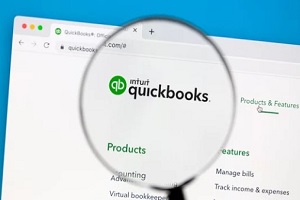 Is your QuickBooks set up to comply with DCAA regulations?
Is your QuickBooks set up to comply with DCAA regulations?
Many believe QuickBooks accounting software is incompatible with DCAA regulations and that using it may impede your chances of clearing a DCAA audit. But that’s not true.
Although the platform isn’t built from the ground up to match DCAA and FAR auditing standards out of the box, and it does have some limitations regarding compliance, but there are ways to configure QuickBooks to fulfill DCAA audit criteria.
Here’s what you need to make the most of QuickBooks for your contracting business:
Pre-award Accounting System Survey
DCAA QuickBooks compliance starts with the SF 1408 Pre-award Survey Checklist. This checklist outlines government requirements for contractor accounting systems.
The SF 1408 Survey, or Pre-award Audit, is undertaken before awarding any cost-reimbursement contract to assess the ability of your accounting system to accumulate expenses according to contract requirements.
The DCAA focuses on how costs are classified, segmented, distributed, recorded and billed to safeguard taxpayer money against excessive or erroneous invoicing.
DCAA auditors examine your accounting system design and capability to the SF 1408 Pre-award Survey criteria. You won’t get the contract if your QuickBooks system isn’t adequate.
GAAP-Compliant Account Chart
 A compliant accounting system needs a chart of accounts that conforms to GAAP and easily distinguishes expense pools.
A compliant accounting system needs a chart of accounts that conforms to GAAP and easily distinguishes expense pools.
Some business owners believe doing this correctly immediately results in DCAA audit compliance. However, this is just the first step. The chart of accounts is a list of general ledger (GL) accounts.
In QuickBooks, you must carefully sequence your chart of accounts to separate direct and indirect expenditures. Split the indirect costs overhead, fringe and general and administrative pools. You must also keep individual accounts for unallowable costs.
Next, your general ledger should include prepaid expenses, payables, receivables and unearned revenue to show that your accounting system is accrual-based.
Keep Track Of Your Timekeeping Practices
Your timekeeping system should be automated and connected with QuickBooks to quickly and automatically calculate labor costs. These timekeeping procedures should be recorded per the following guidelines:
- When it is necessary to record time
- Setup of authorizations
- Controls to ensure staff charge time to the proper contracts and categories
QuickBooks enables time tracking for payroll employees so appropriate reports are provided. Having the same payroll and timesheet periods simplifies accounting and reporting. In Company Settings, select “first day of work week” to start weekly timesheets.
Government contractors frequently record income and spending together when it should be done separately. Additionally, keep in mind that you must record reimbursed expenses as revenue.
Fairly Distribute The Workforce
 When designing QuickBooks for your business, consider labor dispersion. Labor distribution allocates direct and indirect labor expenditures to timesheet totals.
When designing QuickBooks for your business, consider labor dispersion. Labor distribution allocates direct and indirect labor expenditures to timesheet totals.
From the DCAA auditor’s standpoint, labor costs must be appropriately allocated, so that no customer or contract gets preferential treatment.
Set up QuickBooks with employee information, compensation data and payroll items to generate a labor distribution report. Every type of labor, including paid time off and holidays, should have a payroll item. Correctly mapping these will allow labor costs to be posted to the relevant general ledger accounts.
To effectively compute indirect rates, it is crucial to establish distinct cost categories and map them to the appropriate GL accounts. For instance, direct labor for government sites, direct labor for company sites, overhead for government sites, and overhead for company sites.
Contract, Not Customer, Determine Costs
The Pre-award Survey evaluates the capacity of your accounting system to identify and track direct expenses by contract following the Federal Acquisitions Regulations (FAR) guidelines.
You are not following FAR or DCAA audit standards if you record costs, income and billing information by the client rather than a contract.
You may configure QuickBooks to monitor customer jobs, tasks and subtasks. In QuickBooks’ Customer Center, you may record revenues and expenses for several customer tiers. You can provide additional custom contact information as well as the contract type, such as time and materials (T&M), firm fixed price (FFP) or cost plus fixed fee (CPFF). One customer can have many jobs.
Create A System For Tracking Funding
 Your funding system must also be DCAA-compliant.
Your funding system must also be DCAA-compliant.
DCAA audits necessitate contract-based charging. Ensure the total billed amount does not go over any contract, job order funding limitation or contract maximum. In practice, this entails tracking contract billings and comparing projections to actual in progress reports.
Spreadsheets can be used for this type of tracking, but putting up a funding model in QuickBooks would lessen the likelihood of mistakes.
Conclusion
Even though there are various accounting software programs made to meet DCAA audit criteria, Quickbooks usually caters to larger businesses with in-house people to manage them.
QuickBooks is still a sensible option for small businesses because it combines affordability and versatility.
Overcome QuickBooks DCAA Challenges With Diener & Associates
For specific guidance on your company’s QuickBooks DCAA compliance, contact the specialists at Diener & Associates. We can help you build an accounting system to produce the outcomes you want with our in-depth expertise and competence in the government contracting sector. Contact Diener & Associates to schedule a consultation.
